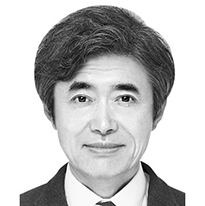Turning to software-defined manufacturing
Published: 26 Sep. 2024, 20:03

Lim Chai-sung
The author is a professor at the School of Business at Konkuk University and a board member of the Korea Industry 4.0 Association.
“The Tesla factory is a factory built around data,” said an American expert who worked with Tesla. It was brought up while discussing software-defined manufacturing (SDM) at a conference of global digital transformation specialists during my trip to the United States.
What does it mean that Tesla is running a data-oriented factory? It means that automation and smart technologies — such as the Internet of Things, digital twins, artificial intelligence (AI), virtual PLC control devices and robots — are advanced. Software has replaced what hardware used to do, and an ecosystem of suppliers providing such technologies has been formed.
Such a factory is software-defined. A manufacturing industry based on these factories can be called SDM. Here, a software system is used to control and coordinate development, manufacturing process activities and supply chain connection activities.
In conventional hardware-defined manufacturing industries, software and data were either within production lines or trapped in unit factories. However, in SDM, software and data are in between production lines or link and interconnect supply chain factories. Moreover, the data flows. In such a manufacturing industry, effective measures can be taken at the general level of the unit factory, beyond the optimization of existing production line units.
This takes more flexible and effective measures at the level of the entire supply chain, and enables more flexible customer-oriented products and services. Germany’s Volkswagen shared the progress of SDM at the Hanover Messe in April. It stated that SDM factories plants are inevitable to enhance flexibility and competitiveness.
This trend of change is difficult to understand and respond to for existing manufacturing companies centered on a hardware workforce. A joint automobile smart manufacturing roadmap report (2023) by the U.S. Clean Energy Smart Manufacturing Innovation Institute and the U.S. Council for Automotive Research discussed such changes in the manufacturing industry and called for companies to be equipped with digital mindsets and attitudes.
The transition from hardware-oriented manufacturing to software-oriented manufacturing is a major paradigm shift that marks the history of the manufacturing industry. Global industrial history clearly shows how industrial powerhouses that settle for the existing paradigm fell and competitors that accepted the new paradigm flourished during the course of rapid changes.
Similarly, companies show a similar pattern. The United States, where software is strong, is no exception. Tesla’s competitiveness is on the rise thanks to its SDM. On the other hand, the existing automobile industry is struggling to enhance its competitiveness through SDM transformation. With a hardware-focused workforce, organizational structure and process, the existing automobile industry will inevitably fall behind in competition with Tesla, which has strengthened its competitiveness through software-defined manufacturing.
It is welcome news that the Korean automobile industry recently announced its plan to transition to software-defined vehicles (SDV) and formed a cooperative alliance. This shift is a green light for the SDM industry.
Current manufacturing leaders that grew up in a hardware-based industry hold the key to changing the manufacturing industry. Due to having a hardware-oriented mindset, it is hard to understand new changes, and even harder to embrace them. Software-defined talents should be able to display bold leadership and get support to pursue changes. Companies should transition to a software-defined workforce, organization and work process.
The government needs to listen to the voices of the hardware-defined manufacturing industry carefully. The manpower and organizational structure familiar with hardware-oriented policy making and implementation should be completely changed. Industrial policies necessary for SDM should be actively implemented.
Korea had the experience of successfully changing the paradigm of the industry through its heavy and chemical industry policies in the 1970s and 1980s. Now, we need to drastically change the industrial paradigm from hardware-oriented manufacturing to SDM. The future will be bright for both companies and countries only when we pursue brave changes.
Translation by the Korea JoongAng Daily staff.










with the Korea JoongAng Daily
To write comments, please log in to one of the accounts.
Standards Board Policy (0/250자)